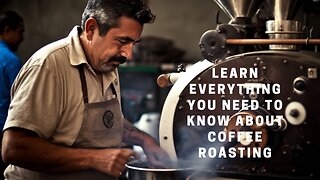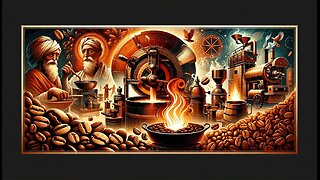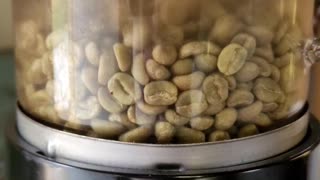Coffee Bean Roasting Process
The process of coffee production: from seed to cup
Coffee is one of the most beloved beverages worldwide. Part of its appeal has been attributed to the fact that coffee has a higher caffeine content than most naturally produced beverages, such as tea and cocoa. In this article we will look at the process of coffee production from seed to your cup.
Planting
Coffee beans are actually seeds. It’s only after they have been dried, roasted and ground that they can be used to brew the humble zip. If unprocessed coffee seeds are planted, they can germinate and grow into coffee plants.
Harvesting
Depending on the specific variety, it takes approximately 3-4 years for newly planted coffee bushes to bear fruit. The fruit, commonly termed cherries, depending on the degree of ripeness, turn from green to bright or dark red – the unripe ones being green in colour. Cherries ripen faster under lower altitudes and higher temperatures. Coffee can be hand-harvested by people to ensure that only the ripe cherries are picked.
Strip picking – The cherries are stripped off of the branch, either by hand or by machine
Selective picking – The red cherries are picked and the green ones are left to ripen. Picking is carried out at 10 day intervals. Since this method is labour intensive, it is mainly used to harvest the high quality Arabica coffee.
Cherry processing
After harvesting, cherries are processed as soon as possible to avoid spoilage. Depending on available resources and location, one of the following two methods is used.
The dry method
This is the ancient method of processing cherries and is still popular in regions where water is scarce. This method is also known as ‘unwashed’ or ‘natural’ processing.
The wet method
This method is a relatively new way of removing the skin from coffee cherries. It’s called ‘wet’ because it uses water to both move the coffee fruit through the process and to extract the beans.
Coffee milling process
Before being taken to the market, the dried coffee beans are processed as follows: Hulling: Hulling parchment coffee involves removing the dried husk; exocarp, mesocarp and endocarp. Polishing:
Coffee tasting process
The packed coffee is repeatedly tasted to additionally check and define its taste and quality. The process is called capping and it takes place in a special room designed to enhance it.
Acidity: Acidity describes the level of acidity of coffee. High acidity coffee is thought to be of a higher quality. Low acidity coffee is usually called soar
Coffee roasting
Unroasted coffee is also known as green coffee and such beans have all the flavours locked in them. Roasting seeks to transform the green coffee into the aromatic brown beans you buy in your favourite stores. Roasting is carried out at temperatures of approximately 550F during which time the green coffee beans are turned continuously to avoid burning. Green beans are first dried until they become yellow and develop roasting smell. Once the beans register an internal temperature of 400F, the step called ‘first crack’ happens during which the beans double in size and start to turn light brown. After that, as the temperature continues to rise, the colour changes to medium brown and a fragrant oil (caffeol) starts to emerge.
This roasting stage is called pyrolysis and is the heart of roasting. It gives coffee the aroma and flavour that you witness every time you drink this magical drink. At this stage, coffee is light or medium roasted and roasting process can be stopped or continued to obtain a darker roast. After first crack and first pyrolysis, beans are absorbing heat until they reach an internal temperature of around 440F, at which point the ‘second crack’ happens and the second pyrolysis begins. Beans turn from medium dark to dark brown and you can see an oily sheen. Once roasting is complete the beans are usually doused in huge amounts of water to cool them off instantly. Becoming an expert roaster takes years of training and experience. A good roaster has to know his beans and equipment. Roasting involves being able to accurately predict the internal temperature of individual beans: something that cannot be taught; it can only be learned from years of experience.
Conclusion
Coffee processing is a very human-intensive process. It requires a lot of expertise to make the right cup of coffee. Thus, one should not dismiss branded coffee.
•
•
•
☕️ #coffee #cafe #instacoffee #toptags #coffeetime #cafelife #caffeine #coffeebreak #coffeefirst #coffeeshopvibes #butfirstcoffee #coffeeaddict #coffeegram #coffeeoftheday #ilovecoffee #coffeelover #coffeelovers #coffeecup #coffeeholic #coffiecup #coffeelove #coffeefliicks #coffeeholic #coffeelife #coffeeplease #ig_coffee #thehappynow #kopi
-
![The Basics of Good Coffee Roasting Technique [On Any Roaster]](https://hugh.cdn.rumble.cloud/s/s8/1/_/y/H/E/_yHEf.0kob-small-The-Basics-of-Good-Coffee-R.jpg) 14:35
14:35
Home Cafe by Charlie
1 year ago $0.01 earnedThe Basics of Good Coffee Roasting Technique [On Any Roaster]
1341 -
 17:57
17:57
Charcoal Coffee Company
5 months agoLearn Everything You Need to Know About Coffee Roasting
129 -
 3:37
3:37
Natural Cures
3 years ago $0.02 earned7 Coffee Brewing Methods & Their Different Benefits
78 -
 10:46
10:46
Charcoal Coffee Company
3 months agoThe History of Coffee Roasting
25 -
 2:02
2:02
The ROOT Brands
9 months agoWATCH: How To Make Perfect Pour-Over Coffee Every Time ☕️ Rahm Roast Specialty Coffee-84 Cup Score
204 -
 0:43
0:43
DavidG4
3 years ago $0.01 earnedCoffee Roasting
67 -
 5:31
5:31
KOW777
10 months agoRoasting Java Beans
2 -
 5:15
5:15
FoxNaturalSupplements
2 years agoJAVA BURN - Java Burn Coffee From What is Made - Java Burn Ingredients - JAVA BURN REVIEW 2022
7 -
 5:21
5:21
Peter von Panda
5 years agoJiva Freeze-Dried Colombian Arabica Mocha Coffee Cubes Review
115 -
 0:12
0:12
Coffees, Teas, Herbals & Drinks
3 years agoGlory Cloud Coffee Roasters - Roasted and Flaming Promo
8